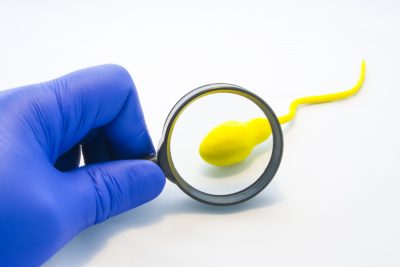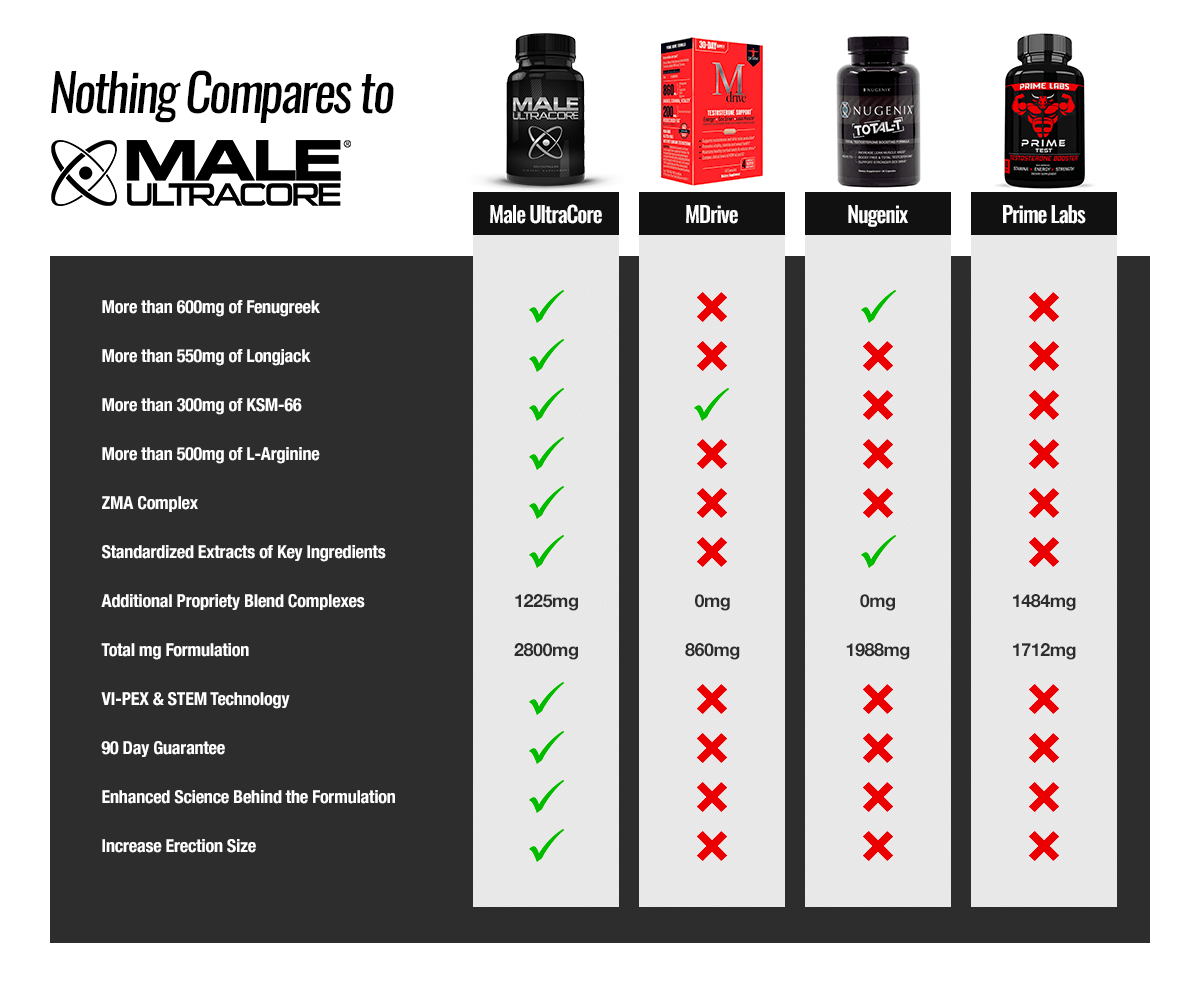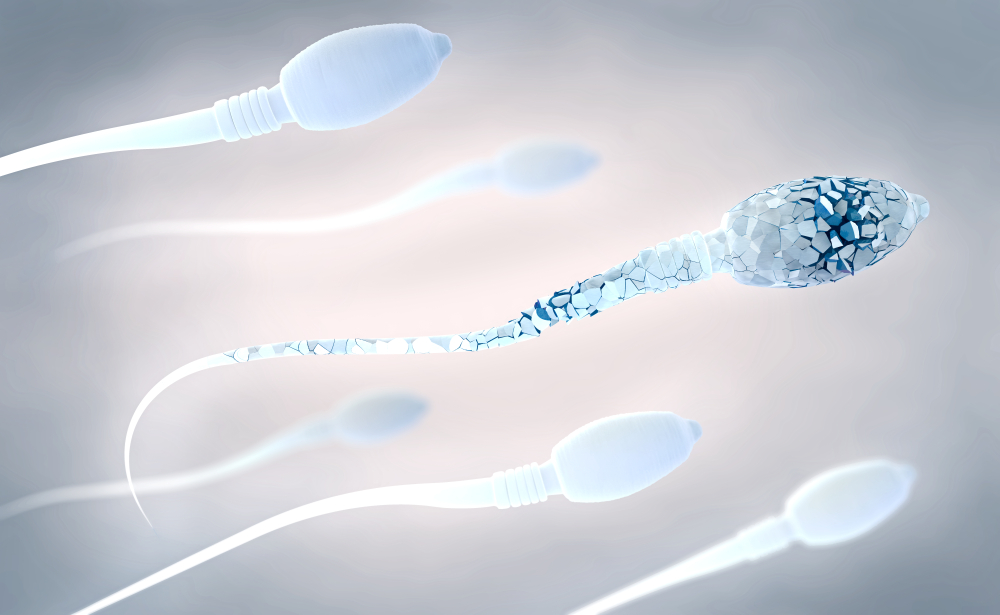Sperm morphology refers to both the shape and size of your sperm. The terms teratozoospermia and teratospermia mean that the percentage of your spermatozoa with normal morphology is very low.
Did you know that in men with severe teratospermia, the percentage of their sperm with normal morphology is almost zero?
Sperm morphology is just one of the factors that are analyzed when you get your semen analyzed. Poor sperm morphology doesn’t mean that you won’t be able to get your pregnant at all, but it may take you a long time before you can successfully father a child.
Find out what factors can affect your sperm morphology.
Normal Semen Analysis Results
The World Health Organization’s reference range for semen analysis is often used as a guide to diagnosing male fertility problems. The normal values are as follows:
- Sperm concentration: 15–259 million per mL
- Ejaculate volume: 1.5–7.6 mL
- Total sperm count in ejaculate: 39–928 million
- Total motility: 40%–81%
- Progressive motility: 32%–75%
- Sperm morphology: 4%–48% percent
As you can see from above, even if only 4% of your sperm have normal morphology, that’s still considered normal. It also means that it’s common to find a lot of sperm cells with abnormal morphology. But it does present a problem when your sperm morphology falls below 4%.
What Is Normal Sperm Morphology?
When your semen sample is examined, certain characteristics have to be present in order for a sperm cell to be counted as having normal sperm morphology.
Sperm head
 The head should be smooth and oval-shaped. In terms of size, the head should be only 5-6 micrometers long and 2.5-3.5 micrometers wide.
The head should be smooth and oval-shaped. In terms of size, the head should be only 5-6 micrometers long and 2.5-3.5 micrometers wide.
The acrosome, a part of the sperm head that is crucial for the sperm cell’s ability to penetrate the egg cell, should be covering 40%-70% of the sperm head.
Sperm midpiece
This refers to that piece that connects the head and the tail. It should be slimmer than the sperm head but similar in length.
Sperm tail
Necessary for the sperm cell’s motility, the sperm tail should be 45 micrometers long and it should be uncoiled. In terms of size, the sperm tail should be the thinnest part of the sperm cell.
Sperm Morphology Abnormalities
There are several kinds of sperm morphology abnormalities that can affect the sperm head, midpiece, or tail.
Sperm head abnormalities include detached head, elongated head, irregularly shaped head, vacuolated head, amorphous head, small acrosome, and no acrosome. If the sperm head is too small or too large, that is also considered an abnormality.
The sperm midpiece may be asymmetric, bent, thin, thick, irregular, or with a cytoplasmic droplet. The tail may be coiled, short, broken, or it may be shaped like a hairpin or have a droplet at the end. There are also many cases when a sperm cell develops multiple tails.
How Do Sperm Morphology Abnormalities Affect Fertility?
When most of your sperm cells are abnormally shaped, it becomes problematic because your spermatozoa may have a hard time reaching the egg cell. Or if they do reach the egg cell, your sperm may not be able to fertilize it.
A sperm cell with an elongated or thin head may contain immature chromatin or the DNA material inside it is fragmented. If such an abnormally shaped sperm cell manages to fertilize the egg cell, there may be problems with the development of the embryo later on.
For men with severe teratospermia whose percentage of sperm with normal morphology is very close to zero, assisted reproductive technology is highly recommended.
Factors Affecting Sperm Morphology
Lifestyle factors such as diet, stress, alcohol consumption, tobacco smoking, as well as continuous exposure of the testicles to heat stress can cause your sperm to become abnormally shaped.
If teratospermia is caused by any of these lifestyle factors, the damage to your sperm morphology may still be reversed, although it may take some time.
Seminal tract infections such as those caused by gonorrhea and chlamydia may also cause your sperm to develop morphological abnormalities. Any medication that may affect your testosterone, luteinizing hormone, or follicle-stimulating hormone levels may also impact spermatogenesis and affect the normal development of your sperm.
Certain factors cause long-term or untreatable teratospermia. These include cancer treatment, genetic abnormalities, diabetes mellitus, meningitis, varicoceles, and testicular trauma.
In such cases, fertility treatment and assisted reproductive technology may be the best option.
How to Improve Your Sperm Morphology
The most basic step you can take to improve your sperm morphology is to modify your lifestyle. Try to exercise, lose some weight, and cut down on your alcohol consumption. In addition, you can also take supplements that are proven to help improve sperm morphology.
Supplements like Tongkat Ali, Maca, and Ashwagandha are known to have positive effects on sperm production and sperm development.
You can get all these from Male UltraCore, the best male enhancement pill that’s packed with a unique blend of natural sexual performance and fertility enhancers.
 Tongkat Ali
Tongkat Ali
In a study involving men with idiopathic infertility, the participants experienced a significant increase in the percentage of sperm with normal morphology after several months of taking Tongkat Ali supplements daily.
Maca
A 2015 pilot study involving healthy men showed that taking maca supplements for at least 12 weeks can result in the percentage of sperm with normal morphology to increase by more than 20%.
In this study, the researchers also noted huge increases in sperm count, sperm concentration, motile sperm count, and semen volume.
Ashwagandha
In a clinical trial participated in by a hundred men with idiopathic infertility, the researchers noted that after 3 months of taking 5 grams of Ashwagandha every day, the sperm morphology improved by more than 25%. The participants’ average sperm count and progressive sperm motility also improved greatly.
Tongkat Ali, Maca, and Ashwagandha all contain high concentrations of antioxidants.
The added antioxidant protection provided by these herbal supplements helps protect the developing sperm from being damaged by free radicals, thus allowing them to develop with normal sperm morphology.
In addition, these three herbs are also known to have adaptogenic properties, which means they help address one of the lifestyle causes of teratospermia. To fully enjoy the combined effects of Tongkat Ali, Maca, and Ashwagandha, make sure you take Male UltraCore every day.
Increase Your Testosterone Levels with Testosterone Boosters
Male UltraCore is a premium testosterone boosting supplement that is designed to maximize test levels, increase your performance and drive, and give you harder and fuller erections.






